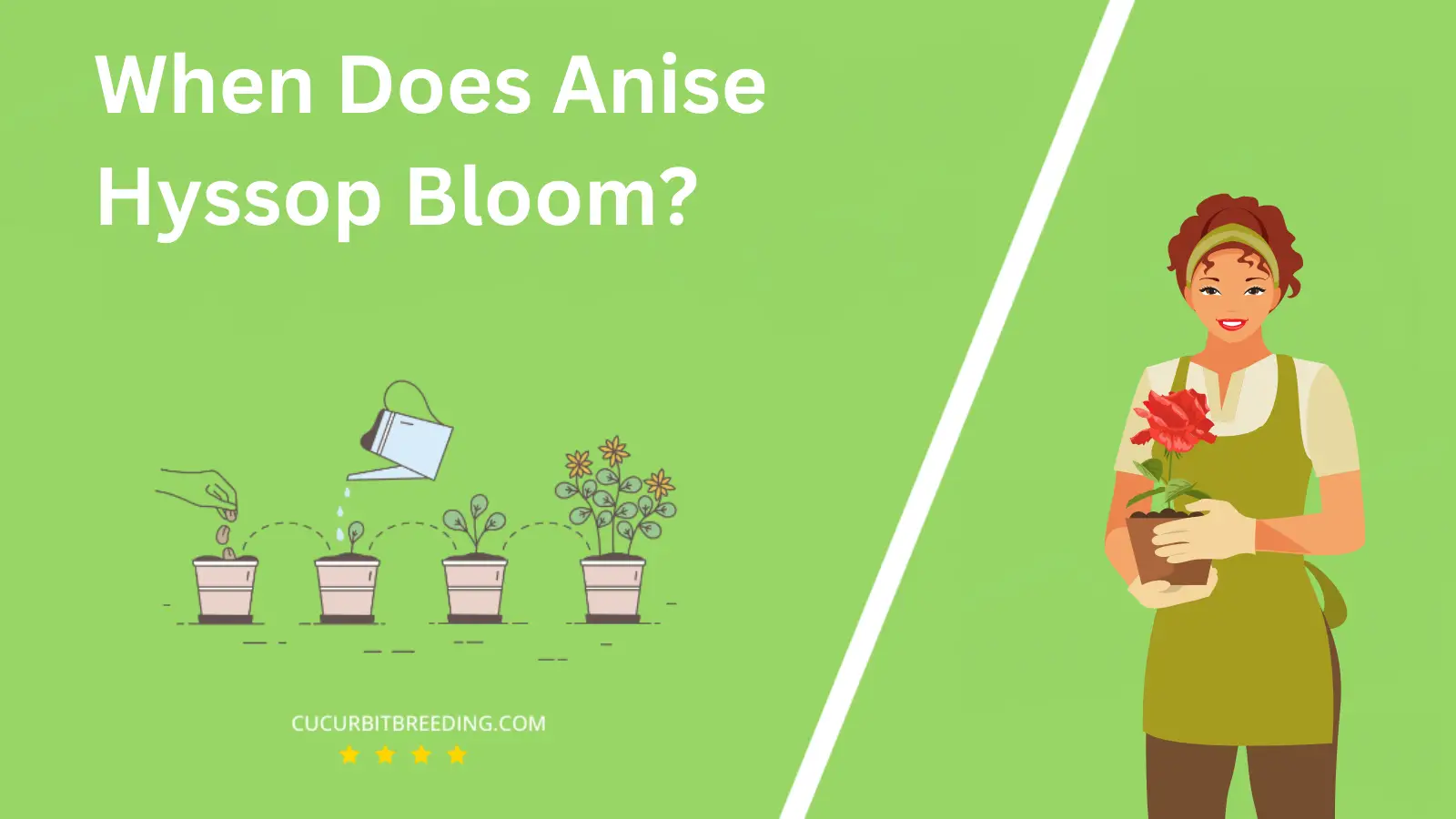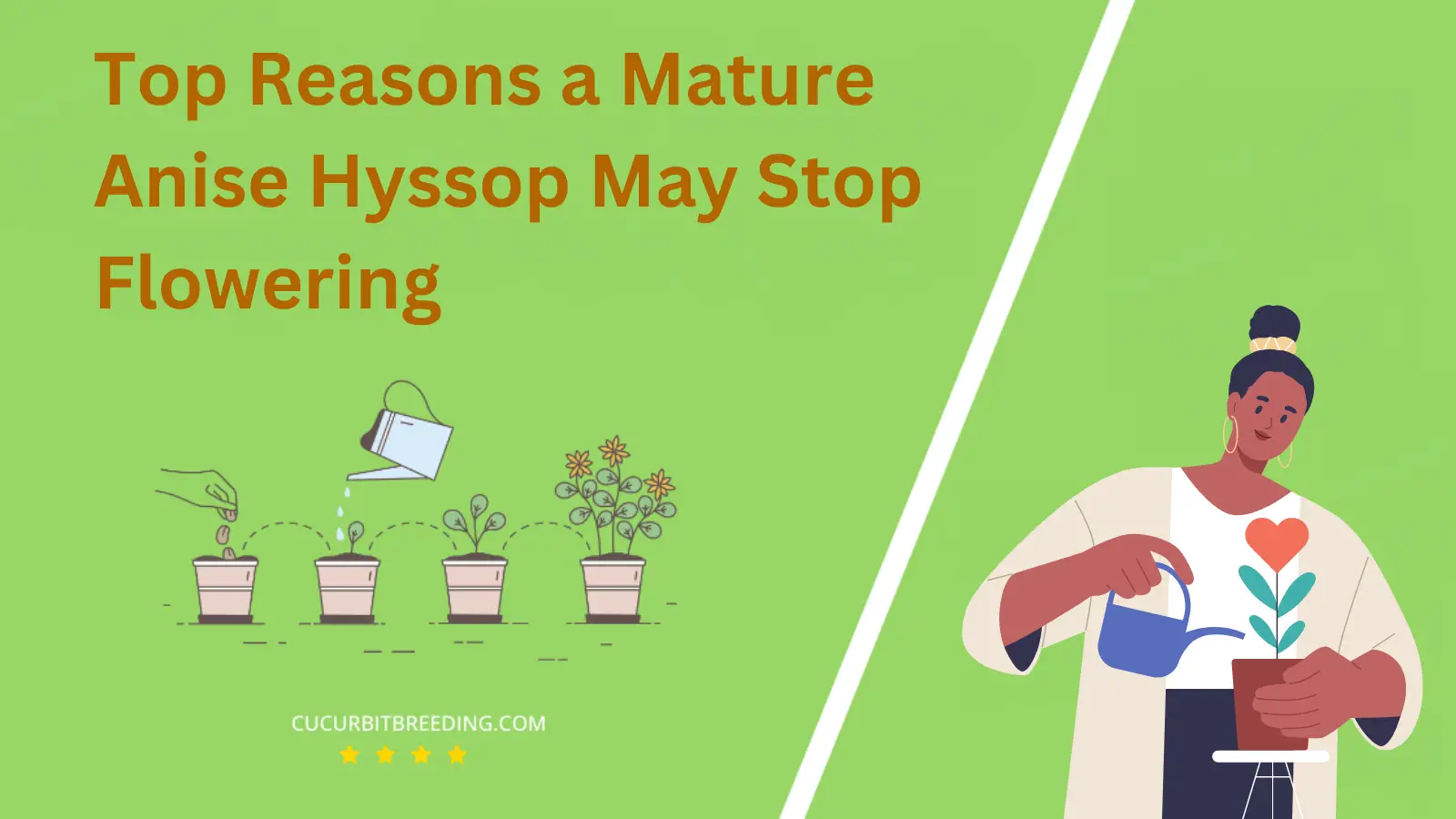
Ever wondered, when does Anise Hyssop bloom? This perennial plant, known for its aromatic leaves and vibrant flowers, has a specific blooming period that gardeners eagerly anticipate.
It serves as a magnet for bees, butterflies, and hummingbirds, turning your garden into a lively and mesmerizing ecosystem. Let’s delve into the world of Anise Hyssop and discover its blooming secrets!
When Does Anise Hyssop Bloom?
Anise Hyssop typically blooms from June to September. The exact timing can vary based on local climate conditions and care practices. The flowers are usually purple and attract a variety of pollinators, including bees and butterflies.
| Stage | Description |
|---|---|
| Germination | Spring (March-May) |
| Growth | Summer (June-August) |
| Blooming | Summer (June-August) |
| Dormancy | (December – February) |
How Long Do Anise Hyssop Bloom?
Anise Hyssop typically blooms for a significant duration, generally from mid-summer to early fall. This flowering period may span approximately 1 to 3 months, depending on the specific growing conditions and care provided to the plant.
How Light Affects Anise Hyssop Blooms?
The light significantly affects the blooming of Anise Hyssop. Anise Hyssop requires full sun exposure for optimal growth, although it can tolerate partial shade. Full sun exposure typically means at least six hours of direct sunlight per day. The duration and intensity of light exposure can directly influence the plant’s ability to produce blooms. In conditions of lower light, the Anise Hyssop may grow fewer flowers or none at all.
Will Anise Hyssop Bloom in the First Year You Plant It?
Yes, Anise Hyssop will bloom in the first year you plant it, provided it is planted early in the spring and given proper care. This includes adequate sunlight, well-drained soil, and regular watering. However, the fullness and vibrancy of the plant’s blooms will significantly increase in the second year.
Will Anise Hyssop Bloom Every Year?
Anise Hyssop is a perennial plant, meaning it will bloom each year without needing to be replanted. The blooming period usually occurs in the summer, between June and September. However, the exact timing can depend on local climate and growing conditions.

Should I Deadhead Anise Hyssop Blooms?
Yes, you should deadhead Anise Hyssop blooms. Deadheading, or removing spent flowers, encourages the plant to produce more blooms and extends the blooming period. It also prevents the plant from self-seeding excessively. By doing so, you’ll not only keep your Anise Hyssop looking neat and tidy but also promote its overall health and vigor.
Top Reasons a Mature Anise Hyssop May Stop Flowering

A mature Anise Hyssop may stop flowering due to several reasons. Insufficient Sunlight: Anise Hyssop needs full sun exposure to bloom. If the plant is not receiving enough sunlight, it may stop flowering.
Poor Soil Conditions: Anise Hyssop thrives best in well-drained soil. Poor soil conditions, such as overly wet or compacted soil, can cause the plant to cease flowering.
Inadequate Watering: While Anise Hyssop is a drought-tolerant plant, it still requires regular watering to bloom. Underwatering or overwatering can lead to a lack of flowers.
Lack of Nutrients: Nutrient deficiencies can lead to a lack of flowering in Anise Hyssop. It’s important to ensure the plant is receiving the right nutrients, including phosphorus, which is crucial for flower development.
Disease or Pest Infestation: Diseases, such as powdery mildew, or pests can prevent the plant from flowering. Regular inspection and proper plant care can help prevent these issues.
Improper Pruning: Anise Hyssop needs to be pruned correctly. Improper pruning techniques might cause the plant to stop flowering.